Dark Souls III multiplayer hands-on review
Turns out that three is a crowd when it comes to monster hunting
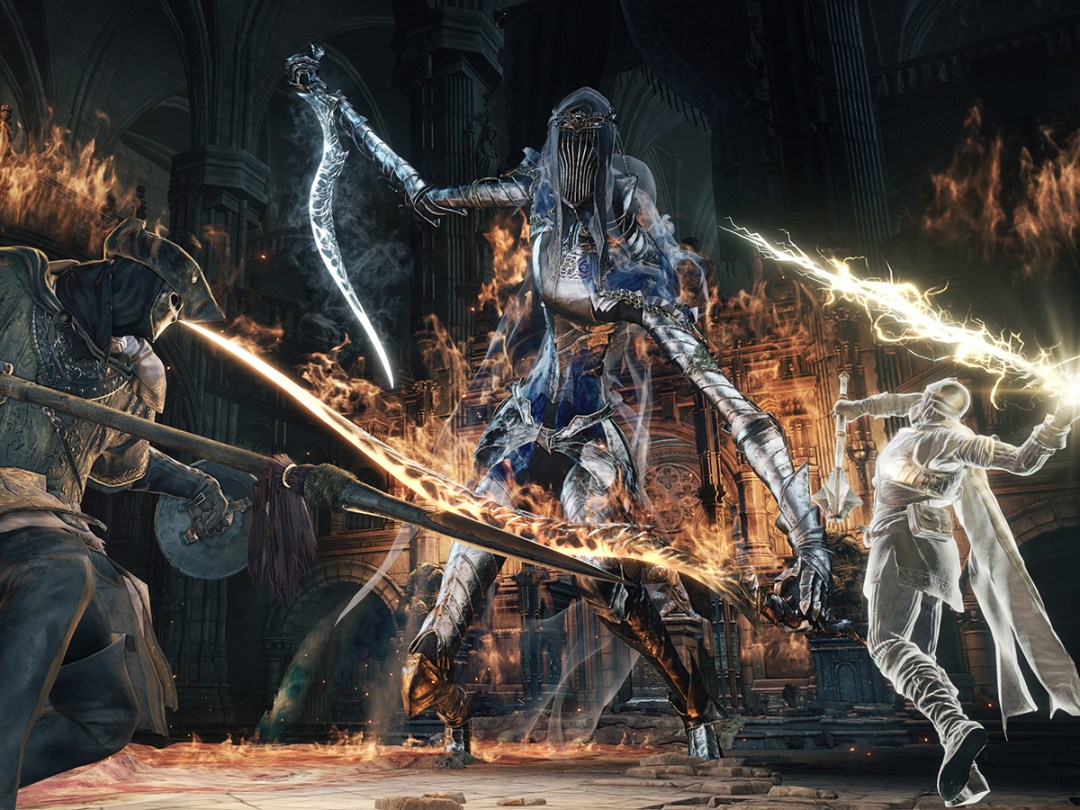
This is an impressions piece based on a hands-on event that we attended before the launch of Dark Souls III. It’s super-detailed and will give you a great sense of how the multiplayer works, but we do now also have a full review of Dark Souls III – check that out for our final verdict!
Dark Souls and multiplayer might not sound like the most appealing cocktail. For a game that excels at timed, considered combat, the idea of repeating this ad nauseum on a frenetic scale hardly screams ‘online japery’.
That said, what I’ve seen so far of Dark Souls III so far is absolutely mouthwatering. So when FromSoftware recently opened the doors to multiplayer shenanigans, I decided to put my skepticism to the test. After all, I’ve already lost a severe chunk of my life to this brutal Japanese ARPG. A few more hours couldn’t hurt.
Genie in a soapstone
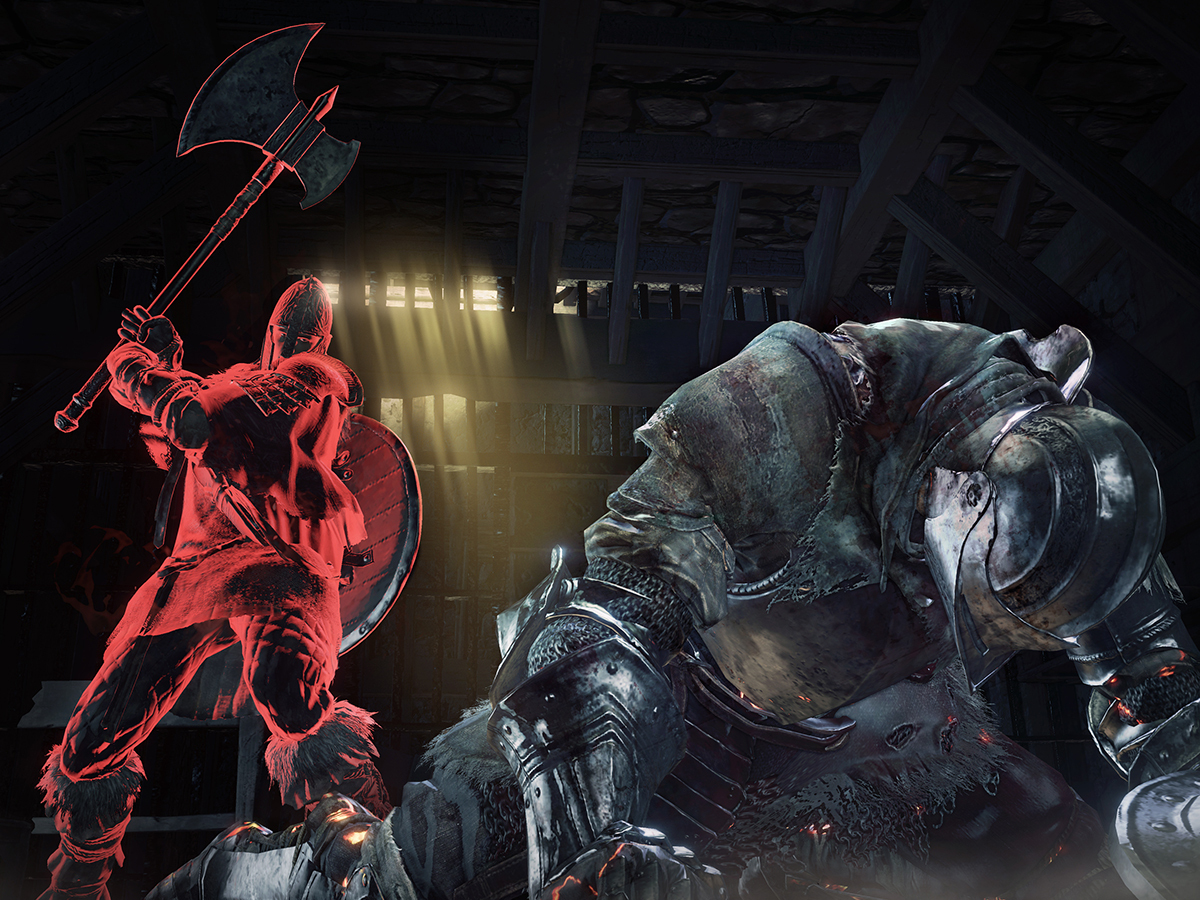
Dark Souls III, like its predecessor, tries to keep multiplayer and single player modes tied together. There are no arenas dedicated to PvP combat or specially designed co-op components only designed to be played with two people. Instead, the online foray consists of players diving into each other’s playthroughs. The build available during the stress test was pretty much identical to the one we got our hands on a month ago with the exception that this world swapping had been enabled.
To keep players immersed in the game’s illusion, and prevent a single vs multiplayer partition online functionality is built into the items that players find in their inventory. The first, a ‘white sign soapstone’ is the key to accessing co-op.
Soapstones allow you to cast a ‘soul sign’ on the ground. These glowing markers can be seen by other players in their own instances of the game, and if activated summons the soul sign’s caster to assist the ‘host’ player as a friendly phantom.
Conversely, if you want other players to help you out in your instance of the game, then an item called an ‘ember’ must be used. This allows you to see soul signs other players have cast and summon them into your world instead. It’s possible to scoop up a maximum of four players into your own instance at any given time.
Whilst in practice this isn’t all as befuddling as it sounds, it still makes joining other players more complicated than it should be. Soul signs appear in the exact place they were initially cast, which means they can be easily missed. Almost all the soul signs I found were clustered around the bonfire checkpoint at the beginning of the level, but it took me a good hour of hunting to find this out, leading to unnecessary head scratching. In this day and age, we’re used to having functions like multiplayer at our fingertips, and don’t expect to have to go searching for it.
The Phantom Menace
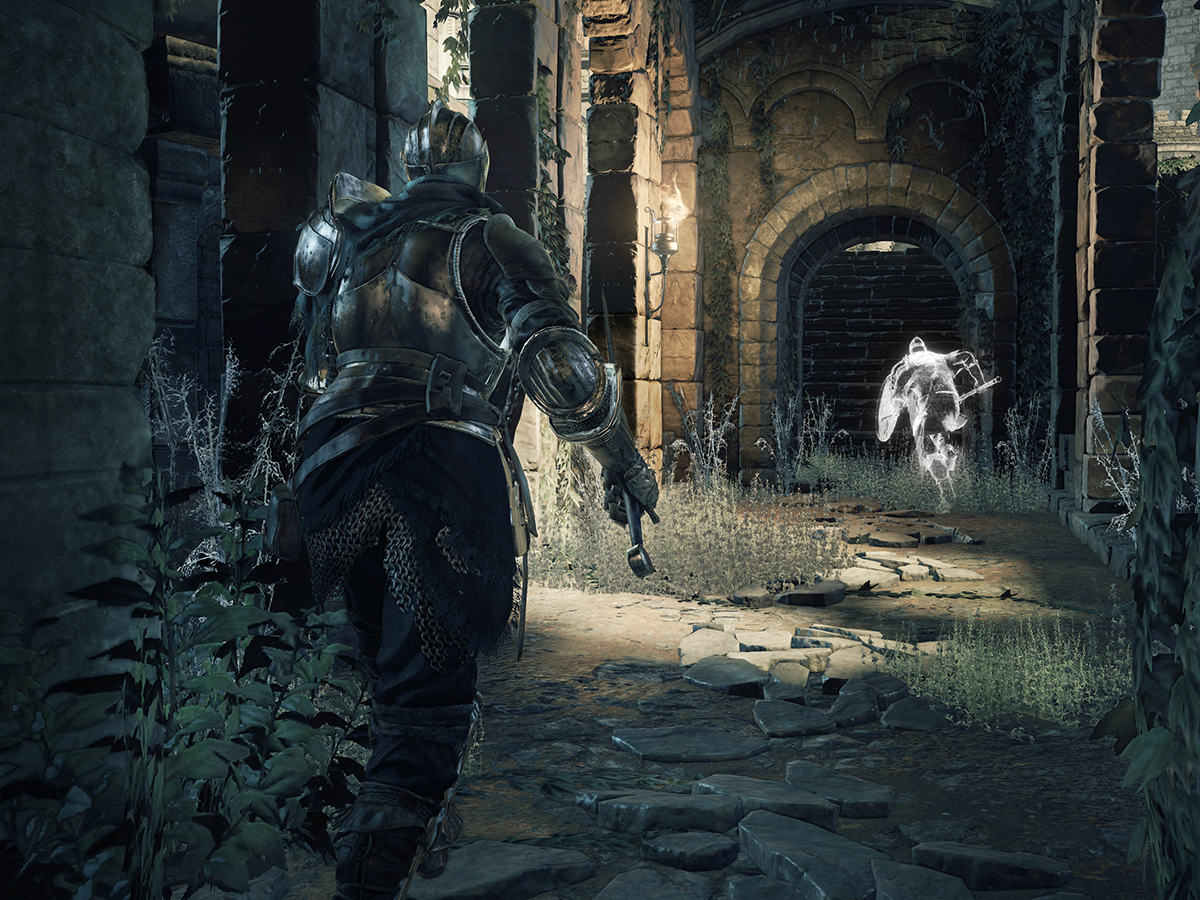
My last experience of Dark Souls III saw me at the wrong end of an unbridled spanking, so company from other players was welcome.
A party of five makes mincemeat of most challenges, and whilst the brief interlude from my inner monologue of constant disappointment and shame was cheering, the ease of our progress did undermine my sense of achievement. Often my blade didn’t even connect once, and I’m pretty convinced that had I chosen to pop out for a Cornish pasty, the team might not have noticed my absence.
Dark Souls III cranks up the difficulty relative to the amount of allied players. For every extra player boss HP is increased two fold and standard enemies by fifty percent, but with the sheer amount of swords swishing about, this didn’t seem to matter at all – almost all enemies fell immediately beneath our swarm.
Herein lies another issue; teamfighting tends to descend into organised chaos where all members simply fling themselves into the mass of monsters ahead. All the careful level design, placement of monsters and delicate positioning goes out the window when five players descend on an area designed for a solo combatant.
The one exception the rule I witnessed was the final boss of the multiplayer test. By some miracle of psychic communication, my team arranged ourselves into a pattern where we took turns to be the bait whilst the others flailed away at its legs. It worked so perfectly that we brought Madame Lankyblades (I’ve taken to renaming the monsters to reduce the sense of impending doom) down without losing a single member of the party.
Friendly phantom, dark spirit

Using a red eye orb, another item in the inventory, invokes PvP instead of co-op play. Rather than arriving as a friendly phantom in another game, you spawn as dark spirit whose mission is to slay the other player. If the dark spirit slays the host, or vice versa, the winner receives rewards such as precious precious estus flasks.
The results in this mode were mixed. When first using the orb, I couldn’t find the opposing player no matter how hard I tried, leading me to suspect that the spawn point was misplaced or the other player had left without me being notified.
Subsequent attempts almost always saw me spawn in worlds where the player had summoned several allied phantoms to assist them, leading to one fight which was a five vs one washout. Dark Souls III often feels challenging, but this felt unfair.
That said, there exist a great many tactical options when playing as the dark spirit. NPC enemies won’t attack you in this form, so by positioning yourself next to a boss, you can force the other player into an unfavourable fight by effectively impeding their progress unless they come past you. More often than not though, my playthrough suffered the same haphazard blade swishing as co-op.
3 is a magic number › The Legend of Zelda: Tri Force Heroes review
Written in blood
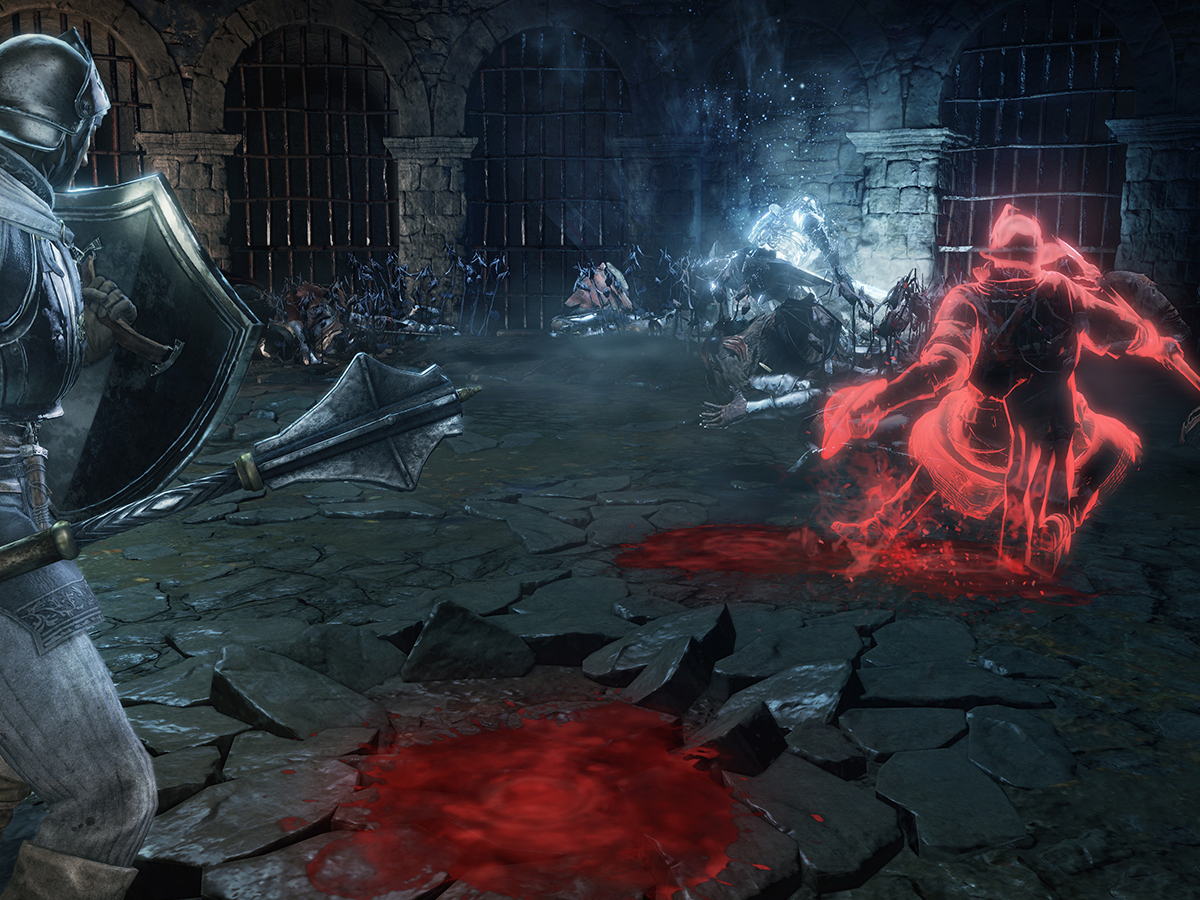
Dark Souls III’s multiplayer does have a few other tricks up its sleeve, which are smarter than its PvP and co-op modes.
It’s now possible to message markers on the ground which appear for other players during their own playthroughs. Each short communique is made up of selections from two drop down menus of phrases. One might read ‘weapon / to the right’ or ‘beware / ambush’.
These notes were great at making me aware of bonuses that would usually have passed me by as well as keeping me out of harm’s way where I would usually have charged to my death.
Of course, not all players will be as kind. One particular message read ‘illusory wall ahead’, and so, trusting my fellow man, I repeatedly slammed myself into the stone facade in front of me expecting to find myself staring at the train to Hogwarts. Sixty seconds later, I realised I’d been had, and was forced to take a tea break to contemplate my gullibility.
There a few other nice touches to boot. Bloodstains around the map indicate areas where previous players have tried and died, and activating them invokes a pair of temporary phantoms that replay the poor sod’s last moments. Occasionally other players in the same stage of the game will also appear as faint ghosts, letting you know that someone else, somewhere around the globe, is at exactly the same stage of exasperating failure that you are. It’s the little touches that make all the difference.
Dark Souls III multiplayer Initial Verdict
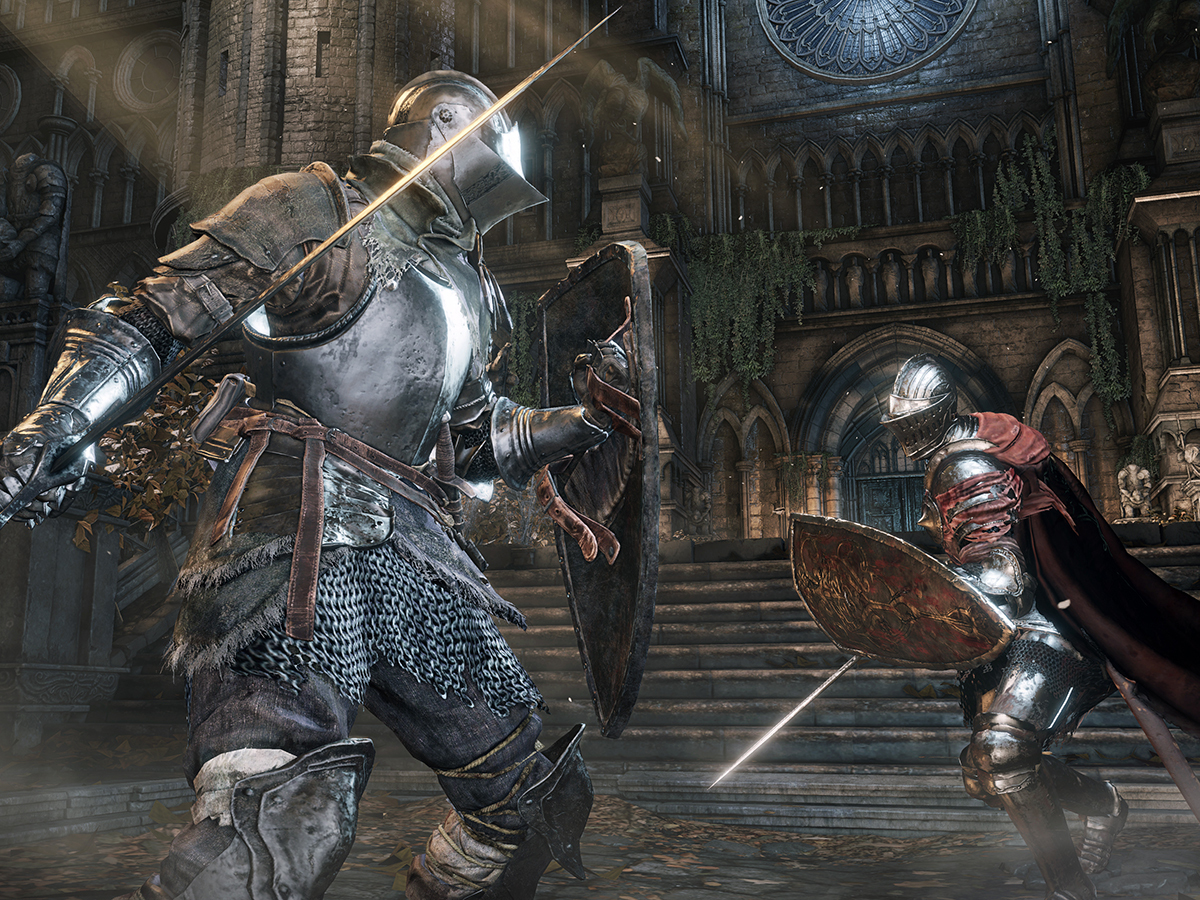
In spite of its merits, I can’t help the feeling that Dark Souls III’s multiplayer disregards the game’s raison d’être. Riding solo is what this game was made for, and adding real-life-actual-humans to the mix adds unnecessary complication.
Will players really bother to play as a phantom assisting a random ally on the internet and then replay the very same section in their own game? If I know Dark Souls fanboys and fangirls, then the answer is probably yes because they’re a bunch of raving lunatics. As for the rest of us, one turn beneath this game’s punishing whip is probably more than enough.
This is an impressions piece based on a hands-on event that we attended before the launch of Dark Souls III. It’s super-detailed and will give you a great sense of how the multiplayer works, but we do now also have a full review of Dark Souls III – check that out for our final verdict!
Good ol’ gaming › The top 10 console games in the world right now



